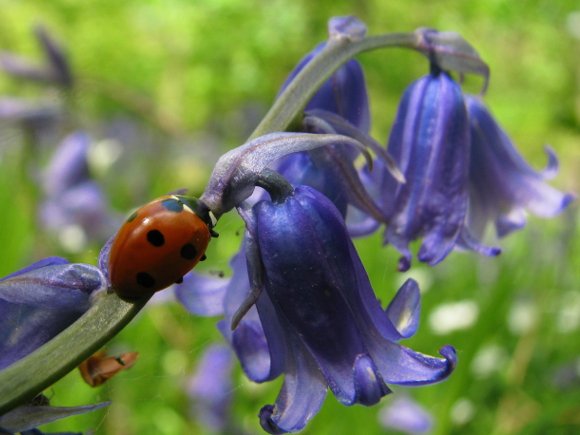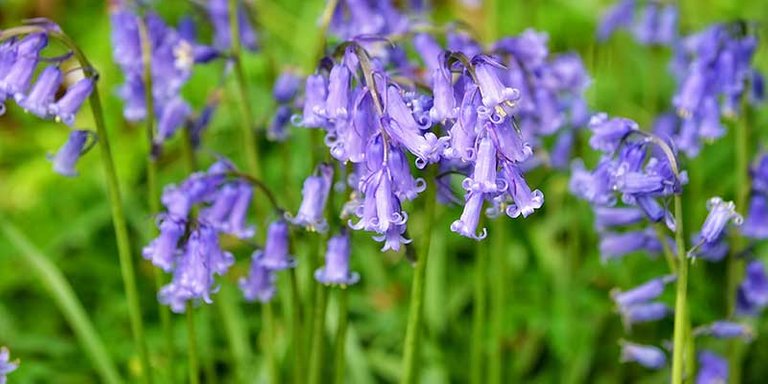Amazing plant @ctrl-alt-nwo!
Six reasons to grow native bluebells (Hyacinthoides non-scripta) in your garden
Bluebells are:
One of the UK’s most loved and iconic wildflowers
Easy to grow so you can recreate that amazing woodland bluebell carpet experience in miniature
A welcome splash of colour in April and May
Valuable early nectar source for insects
Good for those tricky shady spots in the garden
Quick to spread
How to grow bluebells in your garden
It’s quicker to start with bulbs since seeds can take 4-5 years to reach flowering size. You can buy bulbs either in spring ‘in the green’ (during active growth) when it is believed they are more likely to establish successfully, or as dry bulbs at other times of the year.

Where to grow them
If we take a cue from their natural habitat it will be no surprise to learn that bluebells thrive in partial shade, under deciduous trees or shrubs and need moist but well drained soil. I personally think they are at their most stunning when planted under silver birch trees, creating a ‘woodland in miniature’.
Enriching soil with leaf mould, manure or garden compost will often be beneficial. Bluebells also thrive when planted in grass, provided those areas are not mown until the leaves have fully died back each year.

Planting and care
Plant ‘in the green’ bulbs at the same depth they were in the ground before (look for the junction where the foliage turns from white to green). Plant dry bulbs at least 10cm deep and space 10cm apart; ensure the pointed growing tip is facing upwards.
For a more natural effect, plant small clumps of bluebells together with irregular spacing between clumps. You could also throw the bulbs across the planting area and plant them where they land.
Water bulbs well after planting.
Growth and flowering may not be brilliant the following year, while the plants re-establish, but be patient!
After leafing and flowering each year, don’t cut the foliage off – the leaves use sunlight to make food which strengthens the plant for the following year.
If you want to help your bluebells spread, lift and divide bulbs after flowering. If your bluebells thrive, spreading will also happen naturally via bulb division and seed.
Be aware that dense clumps of bluebells may eventually out-compete more delicate spring plants or spread to the ‘wrong’ place in your garden. Removing heads after flowering will help prevent spreading and unwanted bulbs can be dug up during the growing season when they are more easily found.

https://www.woodlandtrust.org.uk/blog/2017/04/growing-bluebells/
Source
Spam is discouraged by the community, including comment spam.
More Information:
The Art of Commenting
Comment Classifications